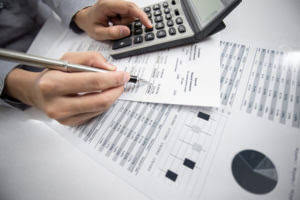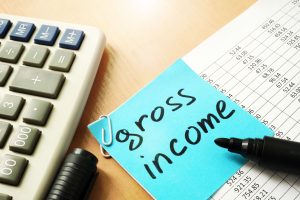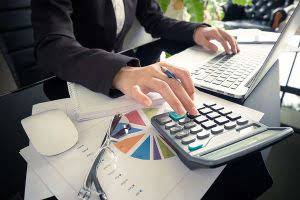
That’s why our editorial opinions and reviews are ours alone and aren’t inspired, endorsed, or sponsored by an advertiser. Editorial content from The Blueprint is separate from The Motley https://www.bookstime.com/ Fool editorial content and is created by a different analyst team. From an accounting perspective, you’re selling the freezer at a $3,000 loss ($1,000 sale – $4,000 net book value).

The declining balance method is a method in which larger amounts of depreciation expenses are recorded in the earlier years of the asset. Carrying Value Of The AssetCarrying value is the book value of assets in a company’s balance sheet, computed as the original cost less accumulated depreciation/impairments. It is calculated for intangible assets as the actual cost less amortization expense/impairments. Balance SheetA balance sheet is one of the financial statements of a company that presents the shareholders’ equity, liabilities, and assets of the company at a specific point in time. It is based on the accounting equation that states that the sum of the total liabilities and the owner’s capital equals the total assets of the company. The decrease in the value of a fixed asset due to its usages over time is called depreciation. Still, in the article, we will discuss two depreciation methods that are normally used to calculate depreciation for the entity fixed assets and how accumulated depreciation is related to the depreciation.
The methods used to calculate depreciation include straight line, declining balance, sum-of-the-years’ digits, and units of production. A common system is to allow a fixed percentage of the cost of depreciable assets to be deducted each year. This is often referred to as a capital allowance, as it is called in the United Kingdom. Deductions are permitted to individuals and businesses based on assets placed in service during or before the assessment year. Canada’s Capital Cost Allowance are fixed percentages of assets within a class or type of asset. The fixed percentage is multiplied by the tax basis of assets in service to determine the capital allowance deduction.
A machine purchased for $15,000 will show up on the balance sheet as Property, Plant and Equipment for $15,000. Over the years the machine decreases in value by the amount of depreciation expense.
Accounting Concept
The assets must be similar in nature and have approximately the same useful lives. An asset’s depreciable cost is the total value that can be depreciated over its useful life.

Accounting Accounting software helps manage payable and receivable accounts, general ledgers, payroll and other accounting activities. 10 × actual production will give the depreciation cost of the current year. Under the double-declining variant, a larger deprecation expense of $30,000 is recorded. As such, the business may make more use of the asset in its early years, which accelerates its depreciation. Alex will have to recognize a yearly depreciation expense of $24,000.
How Are Accumulated Depreciation And Depreciation Expense Related?
The Blueprint walks you through how to calculate and record accumulated depreciation. Applicant Tracking Choosing the best applicant tracking system is crucial to having a smooth recruitment process that saves you time and money. Appointment Scheduling Taking into consideration things such as user-friendliness and customizability, we’ve rounded up our 10 favorite appointment schedulers, fit for a variety of business needs.
Using the straight-line method, you depreciation property at an equal amount over each year in the life of the asset. The result is $10,000, which is the amount that will be depreciated from the asset every year until there’s no useful life remaining. Divide the amount in the above step by the number of years in the asset’s useful life to get annual depreciation. Subtract the asset’s salvage value from its purchase price to get the amount that can be depreciated. Some companies may list depreciation for plant, machinery, and equipment separately under the value of each item instead of a cumulative figure used in the above example. Let’s take a look-see at an accumulated depreciation example using the straight-line method. The asset’s cost is the original value of the asset when you first gain it, while the expected salvage value represents the total expected value of the asset after it’s no longer usable.
For example, we have fixed assets A and B with USD 500,000 and USD400,000, respectively, and useful life 10 and 20 years. Salvage value is essential to understand when discussing accumulated depreciation. The salvage value is the estimated amount expected to be received for an asset at the end of its life. If “salvage value” sounds unfamiliar to you, it is also known as terminal value, scrap value, residual value, or disposal value. Calculating accumulated depreciation is a simple matter of running the depreciation calculation for a fixed asset from its acquisition date to its disposition date. Although the straight-line method is the simplest and most common method of depreciation, accumulated depreciation will take place no matter which method is used to depreciate your assets.
Where Can You Find Accumulated Depreciation?
These costs include costs incurred initially to acquire or construct an item of property, plant and equipment and costs incurred subsequently to add to, replace part of, or service it. The objective of IAS 16 is to prescribe the accounting treatment for property, plant, and equipment. The principal issues are the recognition of assets, the determination of their carrying amounts, and the depreciation charges and impairment losses to be recognised in relation to them. With that in mind, investors and managers alike utilize this formula to assess the productiveness level of a firm’s invested capital, in the form of fixed assets. A low ratio outlines that the assets could be used for many years to come.
- There, you can find the original cost of each asset as well as its corresponding accumulated depreciation.
- To cater to this matching principle in case of capitalized assets, accountants across the world use the process called depreciation.
- Because of this, the statement of cash flows prepared under the indirect method adds the depreciation expense back to calculate cash flow from operations.
- Say that five years ago, you dedicated a room in your home to create a home office.
- Depreciation expense is recognized on the income statement as a non-cash expense that reduces the company’s net income or profit.
- With the units-of-production depreciation method, the amount of depreciation recorded each period depends on how much the business used the asset.
It would be highly recommended for a company to compare this ratio in relation with former years. This is specifically why banks usually require financial statements from subsequent years. Many systems allow an additional deduction for a portion of the cost of depreciable assets acquired in the current tax year. A deduction for the full cost of depreciable tangible personal property is allowed up to $500,000 through 2013.
Methods For Calculating Accumulated Depreciation
In this case, you may be able to find more details about the book value of the company’s assets and accumulated depreciation in the financial statement disclosures. To find accumulated depreciation, look at the company’s balance sheet. Accumulated depreciation should be shown just below the company’s fixed assets. The accumulated depreciation for an asset or group of assets increases over time as depreciation expenses are credited against the assets.
- A deduction for the full cost of depreciable tangible personal property is allowed up to $500,000 through 2013.
- Accumulated depreciation is important because it can help businesses decide how to invest and budget funds since an asset’s accumulated depreciation affects its value.
- Using the previous example, assume you drove 20,000 miles the first year and 15,000 miles the second.
- Nevertheless, you should keep in mind that it is relative to the firm’s industry standards and line of business.
- Accumulated depreciation is the total depreciation incurred in an asset.
- Accumulated depreciation is the total amount of depreciation expense recorded for an asset on a company’s balance sheet.
Adjustments for Unconsolidated Affiliates and joint ventures will be calculated to reflect funds from operations on the same basis. Funds from Operations shall be reported in accordance with NAREIT policies.
Declining Balance Method
In cases like this, a detailed account of the business’s depreciable assets can be found on the notes to financial statements. When you sell an asset, like the vehicle machine discussed above, the book value of the asset and the accumulated depreciation for that asset are removed from the balance sheet. Since the original cost of the asset is still shown on the balance sheet, it’s easy to see what profit or loss has been recognized from the sale of that asset. The value of the asset on your business balance sheet at any one time is called its book value – the original cost minus accumulated depreciation. Book value may be related to the price of the asset if you sell it, depending on whether the asset has residual value.
However, in most countries the life is based on business experience, and the method may be chosen from one of several acceptable methods. As can be seen from above, each depreciable asset is listed separately along with its corresponding accumulated depreciation account. We do this by subtracting accumulated depreciation from its corresponding asset account. What shows up on your business tax form is the amount of depreciation expense that was taken for the year, including all types of depreciation on all business property. You must calculate depreciation on capital assets every year, so you can include this depreciation cost on your business tax return. Determine the accumulated depreciation at the end of 1st year and 3rd year. Accumulated depreciation will be determined by sum up all the depreciation expenses up to the date of reporting.

Assets are sorted into different classes and each has its own useful life. Depreciation is technically a method of allocation, not valuation, even though it determines the value placed on the asset in the balance sheet.
Accumulated depreciation is a credit balance on the balance sheet otherwise known as a contra account. It is the total amount of an asset that is expensed on the income statement over its useful life.
That’s because you’re required to make a debit to depreciation expense and a credit to accumulated depreciation. The IRS requires businesses to depreciate specific assets using the Modified Accelerated Cost Recovery System . For this method, the IRS assigns a useful life to various asset types. For instance, automobiles depreciate over five years, and commercial real estate is depreciated over 39 years. Now, consider that Waggy Tails decides to use the equipment at the end of 10 years.
Depreciation And Accumulated Depreciation Example
Accumulated Depreciation is the total amount of depreciation of a company’s assets, while depreciation expense is the amount that has been depreciated for a single period. Depreciation is an accounting entry that represents the reduction of an asset’s cost over its useful life. The double declining balance depreciation method is an accelerated depreciation method that multiplies an asset’s value by a depreciation rate. Straight-line depreciation expense is calculated by finding the depreciable base of the asset, which equals the difference between the historical cost of the asset and its salvage value.
Depreciation is then computed for all assets in the pool as a single calculation. These calculations must make assumptions about the date of acquisition. The United States system allows a taxpayer to use a half-year convention for personal property or mid-month convention for real property. Under such a convention, all property of a particular type is considered to have been acquired at the midpoint of the acquisition period.
In this article, we explain what accumulated depreciation is and how to calculate it using the straight-line method and declining balance method. After the 5-year period, if the company were to sell the asset, the account would need to be zeroed out because the asset is not relevant to the company anymore. Therefore, there would be a credit to the asset account, a debit to the accumulated depreciation account, and a gain or loss depending on the fair value of the asset and the amount received. Accumulated depreciation is the total amount of depreciation expense recorded for an asset on a company’s balance sheet. It is calculated by summing up the depreciation expense amounts for each year.













